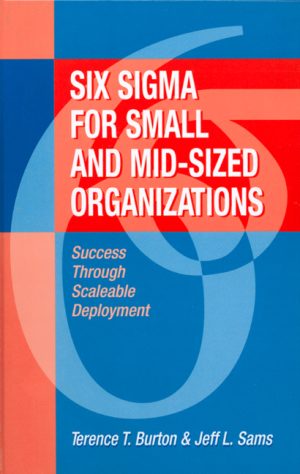Pulsation in Architecture
$79.95
By Eric Goldemberg
Softcover, 8.5 x 11, 480 pages
ISBN: 978-1-60427-023-5
October 2011
Description
Pulsation in Architecture highlights the role of digital design as the catalyst for a new spatial sensibility related to rhythmic perception. It proposes a novel critical reception of computational architecture based on the ability of digital design to move beyond mere instrumentality, and to engage with core aspects of the discipline: the generative engine of digital architecture reinvigorates a discourse of part-to-whole relationships through the lens of rhythmic affect.
There is a paradigm shift in spatial perception due to the intense use of computational techniques and the capacity to morph massive amounts of data in spatial patterns; rhythm plays a pivotal role in the articulation of the topology of buildings, generating the atmospheric character that induces moods and throbbing sensations in space. Pulsation introduces the fundamental animate capacity of living form and reshapes our perception of architectural space across the multiple scales of a project, from digital inception to fabrication. An emerging thread of rhythmic sensibility loosely binds a survey of contemporary design practices, including contributions by Peter Eisenman, Jeff Kipnis, Greg Lynn, UNStudio, Preston Scott Cohen, Reiser + Umemoto, Asymptote, Ali Rahim, Hernan Diaz Alonso, Ruy Klein, Gage / Clemenceau, NOX, Evan Douglis Studio, kokkugia, and MONAD Studio.
About the author(s)
Eric Goldemberg holds a Masters of Science in Advanced Architectural Design from Columbia University and a Professional Degree from the University of Buenos Aires, Argentina. He has taught at Florida International University (FIU) since 2006 as an Assistant Professor and is the Digital Design Coordinator of the Architecture Department. He has taught at Columbia University, Pratt Institute, and New York Institute of Technology. Goldemberg worked in New York for Peter Eisenman as senior designer for the City of Culture of Galicia, as well as heading several international competitions at that firm. He was project architect for Asymptote Architecture—Hani Rashid + Lise Anne Couture; developing the design for the Guggenheim Museum in Guadalajara; a Crematorium in Schiedam, The Netherlands; and the Penang Master Plan in Malaysia. He worked in Argentina for Clorindo Testa. Eric founded his own design research practice, MONAD Studio, in 1997 with his partner Veronica Zalcberg. MONAD Studio’s practice gained international recognition in 2008, when it was nominated by Terence Riley and chosen as one of the five finalists of the prestigious MoMA PS1 Young Architects Program (YAP) competition. The project was exhibited at the Museum of Modern Art (MoMA) in New York. MONAD’s entry was also exhibited in New York at the PS1 Contemporary Art Center as part of the YAP 10th Anniversary Review. Other prizes and numerous publications followed this achievement. The work of MONAD Studio has been published in the New York Times, Architectural Record, World Architecture (China), i4Design (Chicago), Future Arquitecturas (Spain), Futuristic (Daab Books, Germany), the Miami Herald, Florida InsideOut, Design Book Magazine, Summa+ (Argentina), La Nación (Argentina), PP@PD (PennDesign), Abstract (Columbia University), In Process (Pratt Institute), eVolo Magazine among other architecture journals. MONAD Studio received a bronze medal award at the 2007 Miami Beach Biennial for its Performing Arts Center project in Norway. Eric Goldemberg is the recipient of a Mellon Foundation grant awarded by The Wolfsonian-FIU, and his design research firm MONAD Studio has been commissioned to design and fabricate the display system installation for the exhibition titled “Digital Nouveau”, with the intent of highlighting the shifting terrain of craft and ornament over the last 100 years. Eric Goldemberg organized a conference at FIU with the title “Digital Pulse in Architecture.” This two-day symposium brought to Miami seven renowned contemporary designers and critics from New York and Los Angeles (Jeff Kipnis, Ali Rahim, Hernan Diaz Alonso, David Ruy, Ferda Kolatan, Marcelo Spina, and Perry Hall), contributing to a culture of criticality and unprecedented digital design sophistication in Miami.
Table of Contents
A — ACKNOWLEDGEMENTS
B — FOREWORD
C — CONFERENCE RECORD: Digital Pulse in Architecture
Session1:
Session 2:
Session 3:
D — RHIZOMATIC PULSE
E — AFTERWORD
F — INDEX
Reviews
Pulsation in Architecture makes a very strong case, as the title suggests, for not only movement in architecture—whirling, swirling, curling and more—but for a movement in architecture as well. Eric Goldemberg’s selection of architects and their works captures a constellation of architectural ideas hurtling along the vector of digital innovation like proton beams in the Large Hadron Collider. While many of these designers are quite well known in their own right, Goldemberg’s compilation suggests greater global affinities than might otherwise be supposed. In addition to a shared devotion to the opportunities created by the digital revolution, certain common formal characteristics abound, raising the chicken-and-the-egg question of which is driving which. Jeffrey Kipnis plays the role of wise man in this regard, articulating and synthesizing the myriad ideas put forth at the 2008 Digital Pulse Conference that served as a catalyst for this book. Goldemberg displays an equally thorough overview of the world of pulsing architecture. He is generous enough intellectually to also see the work from the respective designers’ points of view, which include those of Peter Eisenman, Preston Scott Cohen, Greg Lynn, RUR (Reiser + Umemoto), UNStudio, Asymptote, EMBT/Miralles-Tagliabue, Hernan Diaz Alonso, Ali Rahim, Karim Rashid and others. In doing so, Goldemberg tells us not only what he thinks, but in many ways helps clarify the thinking of a generation of designers as well as our own.
—Terence Riley, Architect
Related products
-

Winning E-Learning Proposals
Retail Price: $64.95$54.95 Add to cart -

Six Sigma for Small and Mid-Sized Organizations
Retail Price: $49.95$44.95 Add to cart -

Achieving Inventory Accuracy
Retail Price: $49.95$44.95 Add to cart -

The Networked Supply Chain
Retail Price: $54.95$44.95 Add to cart -

Managing Business Analysis Services
Retail Price: $54.95$44.95 Add to cart

